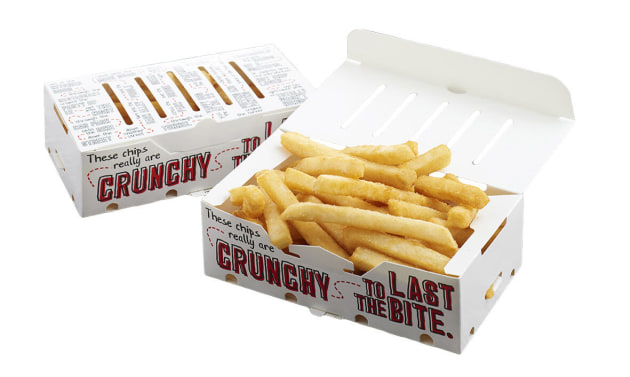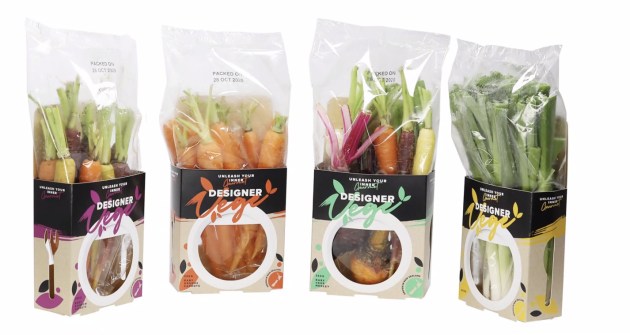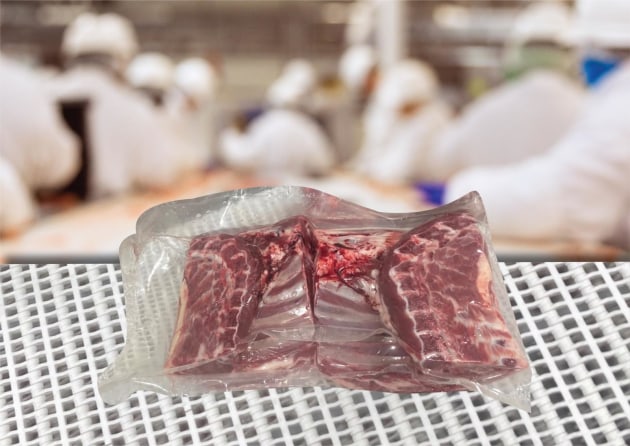Tenacity and creativity are key drivers when it comes to designing packaging to reduce food waste, meet sustainability targets and satisfy consumer expectations, the opening keynote addresses of this year’s Australian Institute of Packaging (AIP) conference confirmed.

Simplot packaging technologist Michael Van Dord shared the astounding statistic that COVID-19 saw an uptick in consumer spending on home delivery by a staggering 258 per cent. Perhaps not surprising was the fact 50 per cent of those orders included chips. Simplot’s brand Edgell was faced with the biggest of challenges – a package that would keep chips crispy for up to 40 minutes.
After around 50 prototypes, its sustainable pack with a raised and ventilated floor entered the market, saving us all from soggy chips everywhere.
While the pandemic saw the growth of home delivery, it caused a major business headache for fresh produce company, Southern Fresh Foods. It was growing 27 different products and supplying 30 tonnes of salad to the restaurant market, which essentially dried up in an instant.
“COVID hit us hard. We make a premium, niche project, with our product being grown in a long pipeline. Suddenly we were looking at hoeing 20 to 30 acres of baby vegetables back into the ground. We had to find a way to reduce what was going to be a colossal loss of food,” Brock Dunn, the company’s sales and marketing manager, said.
The company enlisted N.A.V.I Co. Global to help it repurpose its fresh produce destined for hospitality to a retail product.

N.A.V.I managing director Gilad Sadan said it was a great project, delivered under pressure in the delta of food waste, packaging waste and food safety requirements and expectations.
“There were three components – a grower who needed a market for its product, retailers who want a product with shelf life and consumer appeal, and consumers looking for meal ideas and new recipes to cook while in lockdown,” Sadan said.
“It was about presenting something to the consumer they would expect in a restaurant, but in a format that made it accessible and affordable for them to use at home.”
Then resultant pack design made the produce clearly visible in packaging that was recyclable and extended shelf life, with a cardboard sleeve that featured a recipe.
Meanwhile, Junee Lamb was looking for a solution to its vacuum seal packaging that was not robust enough to cope with sharp bones and rough transit. Working with Sealed Air, its Cryovac brand Total Bone Guard delivered a solution that not only reduced stock loss but met many of the targets now implicit on the packaging industry.

Paul Parker from Sealed Air said packaging must jump through many hoops. “Protection is the core purpose, but it also has to align to the 10 packaging principles, satisfy stakeholders and meet [Australian Packaging Covenant Organisation] targets,” he said.
“It is patched to specific parts using a substrate material to protect areas that need it most. We managed to develop a solution that aligns to packaging guidelines, is optimised for material efficiency, is compliant with food standards and designed for recovery as well as reducing food waste.
“At the heart of Cryovac is saving food. If we meet the challenges faced by our customers, we can meet the challenges of the planet,” Parker said.
Brookfarm rolls with the pouches

Premium cereal and snack company Brookfarm has had sustainability at its core since it began more than 20 years ago. The most recent advancement in its environmental commitment was a partnership with O F Packaging to redesign its cereal pack.
The shift from a metallised multi-laminate structure to a high-barrier mono-polymer pouch that can be recycled through kerbside earned Brookfarm the 2021 Packaging Innovation & Design Awards Gold for Food Packaging Design of the Year.
Brookfarm head of operations and procurement Sally Carter said the project took around 12 months, with ongoing challenges of packaging integrity due to the specific requirements to its high oil content (the company uses macadamia nuts from its farm in all its products) products.
“We were also under pressure from our consumers, asking why our packaging couldn’t be recycled and when that would be happening,” Carter said.
For O F Packaging managing director Joe Foster, it was the latest chapter in a long partnership with Brookfarm. The companies had worked together for almost as long as Brookfarm has been operating.
For Foster, the “recycle-ready” feature and the elimination of the laminate structure were key achievements.
“Towards the end of the trials we looked at its kerbside recycling potential. We tested it at different temperatures, at different strengths and it was successful each time. By attaching a specialised label to the pouch, it could be rolled into a semi-rigid shape and move through co-mingled recycling without any issues. It is a great development and we’re looking to roll it out to others,” Foster said.
The 2021 AIP Australasian Packaging mini conference was held on 17-18 August and showcased best-practice and award-winning packaging designs that have been recognised at the Australasian Packaging Innovation & Design Awards (PIDAs).
The Women in Packaging Forum, run by PKN Packaging News and Food & Drink Business, in partnership with the AIP, was also held on 18 August. Click here for coverage on the keynote and the panel conversation.






